John Badin: Only him, two times won the Nobel Prize in Physics twice
Author:Institute of Physics of the Ch Time:2022.06.22

Anterior
"If you want to get the Nobel Prize, you should have three conditions: first, work hard; second, opportunity; third, the spirit of cooperation."
—— John Batin

Chen Guanrong | Author
Deng Yixue | Edit
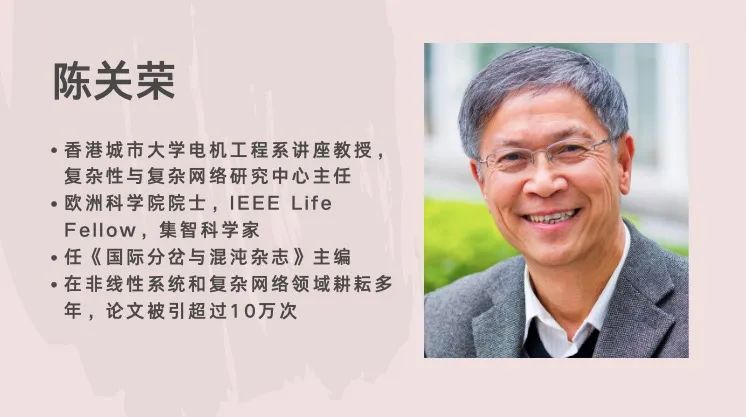
John Bardeen (May 23, 1908 -January 30, 1991) won the Nobel Prize in Physics in 1956 and 1972. It is the only two in history to win physics twice so far Scientist of the prize.
The Nobel Prize in Physics has been awarded a total of 116 items since 1901, with a total of 222 winners, of which Badin has won twice, so a total of 221 people have won the prize. Severe again, of the 116 awards, only one winner, two winners 32 times, and three winners 37 times. Unfortunately, there are only 4 winners of the Female Nobel Prize in Physics: Mary Hurry (1903), Maria Gapet-Meye (1963), Donna Strickland (2018), and Andreia Gates (2020).


Figure 1 Badin and his signature
Badding was born in Madison, Wisconsin, USA. His father Charles R. Bardeen (1871-1935) was the founder and first dean of the University of Wisconsin Medical College, and was an anatomy professor. His mother, Althea Harmer Bardeen (1873-1920), is engaged in interior design and decoration business. Among the five siblings in the family, Bading ranked second.
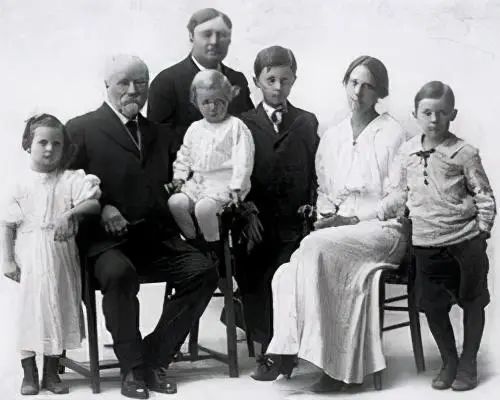
Figure 2 Badin Family (the right is John)
At the age of 9, Badin entered Madison's public middle school junior high school junior high school in junior high school, and was transferred to the University of Wisconsin Affiliated Middle School in the second year. Soon, he won the first place in Madison Mathematics Competition. Badding died of cancer at the age of 12. The little Badin, who lost his mother's love, became melancholy and lonely, his long -term emotions were low, his academic performance declined, and French was even failed. After three years after Bading, he graduated with his brother at the same time with his brother at the same time.
In 1923, the 15 -year -old Badding entered the Department of Electrical Engineering of the University of Wisconsin, and also studied mathematics and physics. There, he received a bachelor's degree in physics in 1928 and the following year.
For Bading in 1928, it was the starting point of his later physics research. That year, many well-known physicists came to the University of Wisconsin for academic visit, including John H. Van Vleck (1899-1980), Peter J. W. Debye, 1884-1966) , Paul A. M. Dirac (1902-1984), Arnold J. W. Sommerfeld, 1868-1951), Werner K. Heisenberg, 1901-1976), Bell Physics Award winner. Their various academic frontier reports have greatly inspired Badin and promoted his determination to develop in the direction of physics.
After graduating from Badin, he stayed in college for a year of antenna design research. The reports of the above physicists have made him particularly yearning for Europe. He then applied for a doctoral scholarship from the University of Cambridge, but unfortunately it was not successful.
In 1930, the US economy began to enter the Great Depression. Badding found a job in the Bay Research Laboratory in Pittsburgh to engage in the research and development of earth physics and underwater oil detection technology. Soon, he invented a new technology that used electromagnetic fields to explore oil, but the company was published for more than 30 years before it was announced.
In 1933, Bading left the Bay Research Lab and came to Princeton University. Bading hopes to follow Einstein's doctorate from Einstein, who has just arrived in the Princeton Higher Research Institute from Europe. However, Einstein did not intend to accept graduate students, so he followed Hungarian physicist Eugene P. Wigner (1902-1995) to study theoretical physics. Vogner is an excellent physicist who has made great contributions to theoretical research in many fields, especially atomic nucleus and basic particles. In 1963, Vigner won the Nobel Prize in Physics for outstanding results in the nuclear shell model. In Princeton, Badin received a joint guidance from Frederick Seitz (1911-2008), a member of the American Academy of Sciences.
In the spring of 1935, Badding, who was about to graduate, received three years of funding from Harvard Research Institute to visit Harvard University. In Harvard, he used Vigner -Sez Calculation method to obtain the formula of the relationship between the internal agglomeration of alkaline metal and the conductivity and the volume. His calculation results were consistent with the results of Percy W. Bridgman (1882-1961) in Percy W. Bridgman, a later Nobel Prize in Physics. In Harvard, Badin also established cooperation with John C. Slater (1900-1976) and his leadership solid physics research team in Harvard, and established the theory and experiment of superconducting performance materials for superconducting performance materials. Research. In 1936, Badding, who was also studying in Harvard, received a Ph.D. in Mathematics Physics at Princeton University. In a doctoral dissertation, he derives the metal electronic function function to calculate the energy required by an electrons from the inside of the crystal to the crystal surface.
In 1938, Bading married Jane Maxwell (1907-1997) with a biological teacher at a women's school in Cambridge, Massachusetts before leaving Harvard University. The two later had two sons and one daughter.
Figure 3 Shopping from Jane and Badin (1938)

Figure 4 The 50th anniversary of the 50th anniversary

In 1941, World War II broke out. Badding went to work in the Navy Military Displacement Lab, and the war ended in 1945. There, he participated in research on hull dehumidification, underwater mines, mines, torpedo design and other research.
After the end of World War II in 1945, Bading joined the Physics Department of Bell Lab. At the end of 1947, Walter H. Brattain (1902-1987) invented a little contact transistor. On this basis, William Shockley, director of the Laboratory Physics Department, invented the knot transistor in 1951 in 1951. As well as, the emergence of transistors has greatly changed our world and is known as the greatest invention of the twentieth century. To this end, the three shared the Nobel Prize in Physics in 1956. By the way, Blaton was born in Xiamen, China. At that time, his parents worked as a foreign academy in a small academy in Xiamen. By the age of one year, their family returned to the United States.
In fact, the three Nobel Prize winners have partnered with many internal contradictions before winning. Most people think that the main problem lies in Shakeli, because he is oppressed by two other colleagues as the director of the Ministry of Physics. In 1951, Badding arrived at the Department of Physics of the University of Illinois (UIUC) and the Department of Electrical Engineering. Blaton stayed in Bell Lab but transferred to another department. Skillley later went to Silicon Valley to establish a transistor laboratory.
Figure 5 Shawkley (front), Bading (middle) and Blaton (right) in Bell Lab
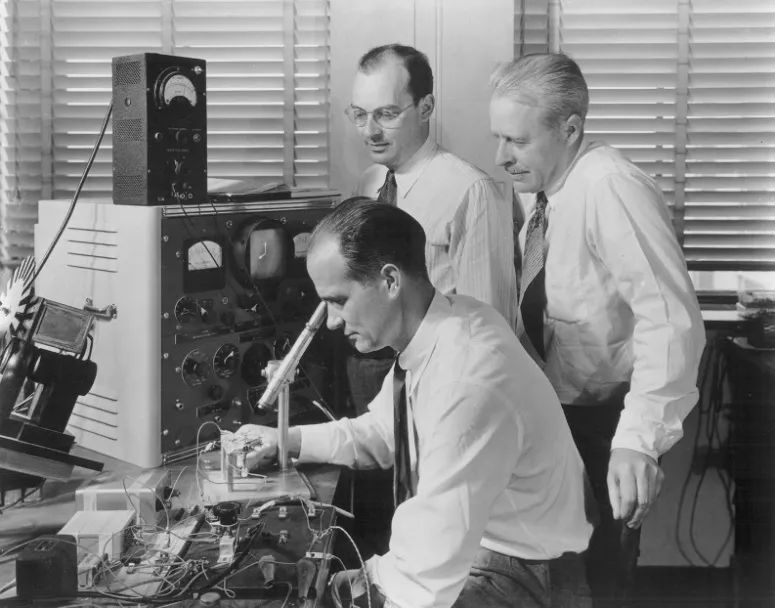
Badding worked at the University of Illinois until retirement. There, he carried out long -term in -depth research on low -temperature superconducting theory and experiments. Specode phenomena have made no progress in research within half a century since discovered in 1911. Badin proposed a superconductive theory based on superconductor isotope effect, but it was soon proved to be wrong by experiments. Badin then realized that his field theory was not enough. How to do it? Badin understands that a person cannot understand everything, but you can find a cooperative to remedy. According to Li Zhengdao, in the summer of 1953, Bading was very interested in several articles of Li Zhengdao. He hoped that Li Zhengdao would introduce a young expert in physics and field theory to cooperate with him to work together to study superiority. Guide physical problems. Li Zhengdao just knew that a colleague at Columbia University had a highly talented graduate student Leon N. Cooper (1930-) after graduating from a post-doctoral study at the Princeton High Research Institute, and recommended him to Badin. But Cooper was very hesitant, saying that he did not understand superconducting physics. But Badin said that you are enough to understand field theory.
At the beginning of 1957, a conference of international condensate and statistical mechanics was held at Stevens College in New Jersey. Badding sent his doctoral student John R. Schrieffer (1931-2019) to attend the meeting. There, Schilifer heard Li Zhengdao's lecture, which was greatly inspired. He wanted to understand some key technical issues on the train home after the meeting. As soon as he arrived at the school, he immediately asked Badin and Cooper to report his new ideas. A week later, the three teachers and apprentices officially announced their cooperation research results, and successfully explained the phenomenon of metal superconductors under low temperature conditions. This is the "BCS theory" named after the three of them. To this end, the three teachers and apprentices shared the 1972 Nobel Prize in Physics. Badding became the only scientist who won the Nobel Prize in Physics twice so far.
Figure 6 Schryphon (left), Badin (middle) and Cooper (right) in UIUC
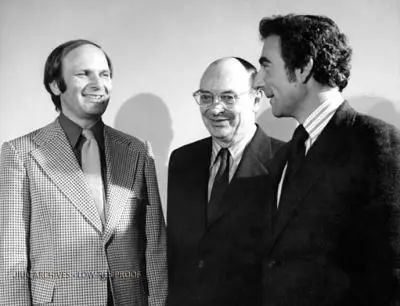
In 1978, Badding left the teaching of motor engineering and physics at the University of Illinois and retired to Professor Rongxiu.
In the next 1980s, Badin was mainly interested in the new quantum mechanics theory of charge -density waves. He believes that the charge density wave can be interpreted as a macro quantum phenomenon of the same superconductivity. The last ten years of Bading's life is committed to this study. On January 30, 1991, Bading died at a hospital in Boston for heart failure at the age of 83. He was buried in the Forest Hill Cemetery in the outskirts of Madison, Wisconsin, his hometown. In 1997, Bading's wife was buried with him after going to the world.
Figure 7 Badin couple tombstone
The main honor and awards of Badin's life include:
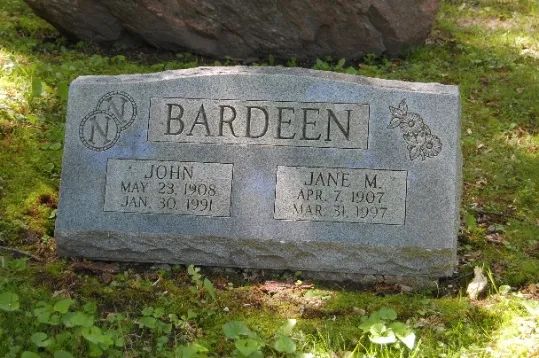
In 1952, the Stuart Ballantine Award was awarded by the Franklin Institute.
In 1954, he was selected as an academician of the National Academy of Sciences.
In 1959, he was selected as a member of the American Academy of Arts and Sciences.
From 1959 to 1962, he served as a member of the Presidential Scientific Consultant Committee.
In 1962, he won the International Federation of Pure and Application Physics Federation.
From 1963-1972, he became a member of the International Federation of Pure and Applied Physics, and served as the chairman from 1969-1972.
In 1965, he won the National Science Medal.
From 1968-1969, he served as chairman of the American Institute of Physics.
In 1971, he won the IEEE Medal.
In 1972, he was selected as an academician of the National Academy of Engineering.
In 1973, he was selected as a foreign academician of the Royal Society.
In 1975, the Franklin Award was awarded by the Franklin Institute.
In 1977, he was awarded the Presidential Medal of Freedom.
From 1981 to 1982, he served as a member of the White House Science Committee.
In 1988, he was awarded the Robonosov Gold Medal of the Soviet Academy of Sciences.
In 1990, he was awarded the Third Century Award by the US President Bush and was selected as one of the 100 most influential Americans in the 20th century.
year 1987. Won the gold medal with the American Academy of Achievement.
Although Bading is a scholar of theoretical physics, he has paid attention to practical applications throughout his life. He has served as consultants of many industries, enterprises and government agencies, and maintains long -term contact and contact with the industry and government departments.
Badin and Xerox's copies have long -term close cooperation. Since 1949, Badin has started to study the optimization of light sensing materials there. Since 1952, he has been a technical consultant of the company, entered the company's board of directors in 1961, and joined his technical guidance committee in 1970. For many years, Bading has been an important member of Schole Company.
Since 1954, Bading has been a technical consultant of General Electronic for a long period of time. In addition, Bading also served as a consultant in the newly established technology companies and companies, especially the small companies founded by his students, supporting their entrepreneurship and providing technical guidance. One of the particularly successful examples was SuperTex, which was established in 1975 and later developed very successfully. At the beginning, Badin served as a member of the company's board of directors. He had cooperated there for many years and guided the research and development of high -voltage integrated circuits.
Badin also has long -term contact and cooperation with Sony, Japan. In 1953, Badin met Sony's first laboratory director Hatoyama Hatsuya and later heirs Kikuchi Kiku. When the University of Illinois celebrated the 60th birthday of Badin in 1968, Hatoyama Hatoyama made a special trip from Japan to participate in the celebration. In 1989, Juchi Wushu made a special visit to the University of Illinois, and donated the company to set up the "Sony -Badin Lecture professor" on behalf of the company to recognize Badin's contribution to the electronic industry.
The two -time Nobel Prize winner Badding is not the kind of academic overlord that is revealed or even prosperous. On the contrary, he has neither proud momentum nor weird personality. His friends and students said that he was an ordinary person in the table. In fact, Badin has always been famous for being "low -key". His students introduced a "Bardeen Number", that is, a person's achievement except for his self -bragging, as a person's modesty indicator. The students believe that the number of Badin is far greater than 1, and many scholars are less than 1. A story says that when people congratulate Badin awarded the Nobel Prize twice, he always laughed and explained: Two Nobel Prizes were shared by three people, so I actually only won two -thirds of prizes.
Looking back at Bading's life, he has long -term work experience in schools, industry and military laboratories, and has experienced the Great Depression of the United States and World War II. Badin's rich and twisty experience and smart and hard work have created a scientific wizard like him.
Because they are celebrities, especially big celebrities, there are many legends in the field. Here are only two more reliable anecdotes.
In March 1957, Bading and his postdoctoral Cooper and doctoral student Schilifre planned to attend a international academic conference sponsored by Physics Society in Philadelphia to report to report the "" metal superconducting physics established by the three of them and apprenticeship about the " BCS theory. However, Bading temporarily decided not to attend the meeting and asked the two students to make a report. Badin wants to make the younger generations recognized by colleagues in the academic community. Many years later, Badin nominated the Nobel Prize winner for the Nobel Prize winner as a Nobel candidate for the Nobel Prize. His original intention is to allow students to get the same rewards as themselves. Unexpectedly, the Nobel Prize selection committee asked them to board the podium of the 1972 Nobel Prize in Physics in 1972. Badin then donated all the prizes that had just received to the Fritz London Memorial Prize Fund, which was awarded by the International Federation of Pure and Applied Physics to commemorate the once -to -Super Super Guidally studied physicists who have made outstanding contributions and rewarded outstanding later people.
Since 1991, the Department of Physics of the University of Illinois (UIUC) has established the "John Bardeen Prize". Outstanding scientists with verified predictions.
Figure 8 The medal of the "John Badding Award"
Badding visited China twice. On September 4, 1975, Bading visited Beijing for the first time with the 12th delegation of the twelve American physics script. In addition to Badin, there are two Nobel Prize winners in Badding, which is his former doctoral student Schilifer and the 1973 physics winner of the superconductor tunnel effect. Ivar Giaever (1929 -). The delegation visited Beijing Institute of Physics, Semiconductor Institute, Biology Institute, Peking University, Tsinghua University and Semiconductor Equipment Factory in Beijing. After that, the delegation went to Xi'an, Nanjing, Wuxi and Shanghai to visit Xi'an Jiaotong University, Nanjing University, Wuxi Rural and Factory, Fudan University, Shanghai Machinery Factory and other places. The itinerary ended in September 15.
Badin's second visit was to come to teach at the invitation of the Ministry of Education and Peking University President Zhou Peiyuan. On April 30, 1980, Bading and his wife arrived in Beijing. Vice Premier Fang Yi met with the Bading couple in the Great Hall of the People. Badin's academic exchanges are mainly conducted at Peking University. In mid -May, the couple visited Xi'an, Nanjing and Shanghai again. Badin has made twelve academic reports and public speeches on the development and situation of superconducting physics. During the lecture, Badin visited the Institute of Physics of the Chinese Academy of Sciences again. There, he answered a question from a Chinese friend and said half -jokingly: "If you want to get the Nobel Prize, you should have three conditions: first, hard work; second, opportunity; third, the spirit of cooperation."
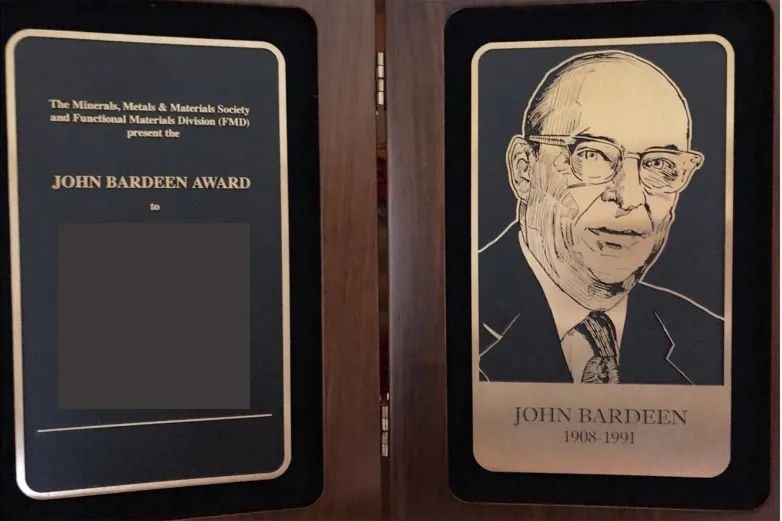
Figure 9 Memorial Badin's postcard
Reprinted content only represents the author's point of view
Does not represent the position of the Institute of Physics of the Chinese Academy of Sciences
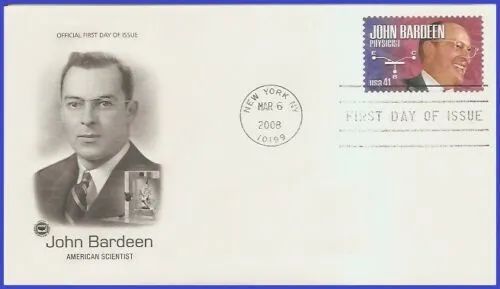
If you need to reprint, please contact the original public account
Source: Jizhi Club
Edit: Cloud Kaiye
- END -
【Hello Wuhan】

East Lake Chia Tai Photo by photographer Ningbo Appreciate more Wuhan Meit...
remind!Linyi has thunderstorms or showers tonight. The local rainfall is large and there may be hail
At the Linyi client June 13th News At 16:00 today, the Linyi Meteorological Observatory released the evening forecast: Tonight to tomorrow, there will be thunderstorms or showers, and the local rainfa